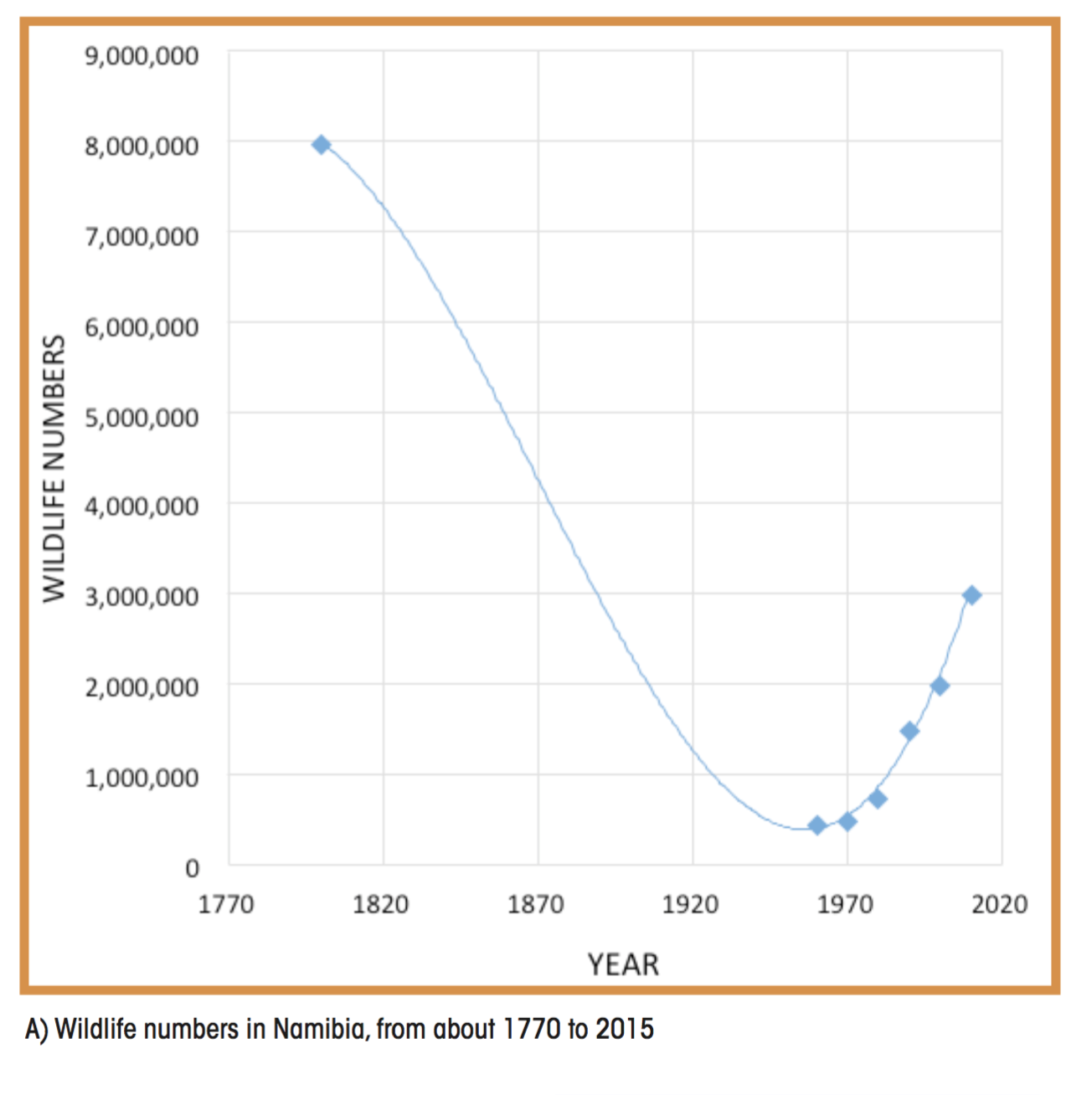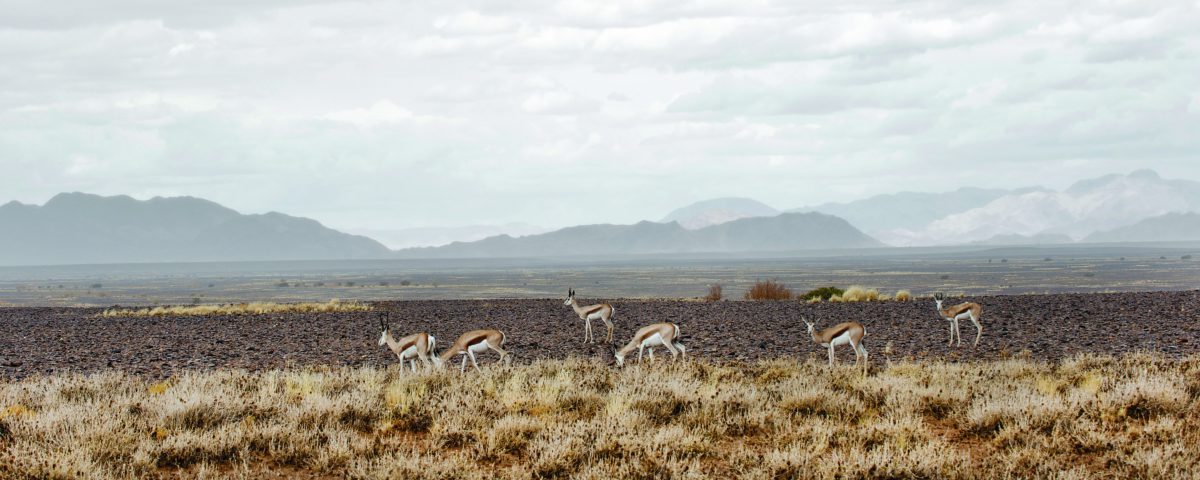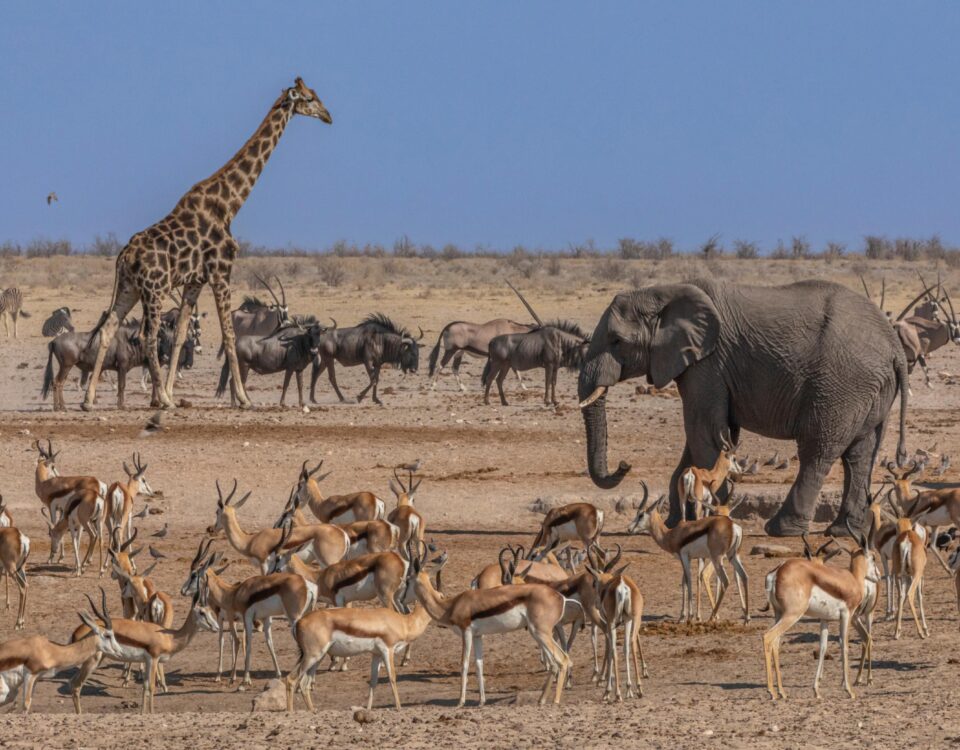
The tapestry of a leopard hunt
August 22, 2017
Following the big conversations, what future for conservation?
August 22, 2017A nd then there is the animal rights movement. I have sympathy for people who stand up for animal rights – I think we all should. None of us want to see animals suffering or being treated badly by members of our species. But a problem arises when animal rights agendas are passed o as conservation agendas. Animal rights agendas are not conservation agendas. Conservation works at the population, species and ecosystem levels. Animal rights works at the individual level. And what might be good for an individual or a collection of individuals might not be good for the long-term survival of populations, species and biodiversity.
Take a simple domestic example. When the farm carthorse was replaced by the tractor, carthorses no longer had to work long hours in the fields. But they also no longer had a value to farmers. Once common, they are now extremely rare. Indeed, carthorse associations have been established to keep these breeds from dying out. e truth is, if animals do not have a value, or if that value is not competitive with other options, then those animals will not have a place, except in a few small isolated islands of protection. And island protection in a sea of other land uses is a disaster for long- term conservation.
Wildlife needs to have value
Animal rights are important. But for wildlife they must be placed within a sound conservation setting, where conservation decisions on behalf of populations, species and ecosystems take priority over the rights of individual animals.
The wildlife situation in Namibia provides a very good example of this. When the first western explorers, hunters and traders entered what is now Namibia in the late 1700s, crossing the Orange/Gariep River from the Cape, the national wildlife population was probably in the order of 8-10 million animals. Over the following centuries wildlife was decimated and numbers collapsed, first by uncontrolled and wasteful hunting by traders and explorers, then by local people who had acquired guns and horses from the traders, then by early farmers, veterinary policies and fencing, and finally by modern-day farmers on both freehold and communal land who saw wildlife as having little value and competing with their domestic stock for scarce grazing. Traditional wildlife management under customary laws administered by chiefs had broken down under successive colonial regimes. By the 1960s wildlife numbers were at an all-time low in Namibia, with perhaps fewer than half a million animals surviving (see Figure A).

At that time wildlife was “owned” by the state. Land owners and custodians were expected to support the wildlife on their land, but they had no rights to use the wildlife and to derive any benefits from wildlife. In response to declining numbers and growing dissatisfaction among farmers, a new approach to wildlife management was introduced. In the 1960s and 1990s conditional rights over the consumptive and non-consumptive use of wildlife were devolved to freehold and communal farmers respectively, the latter under Namibia’s well known conservancy programme. The laws give the same rights to farmers in both land tenure systems.
This new policy led to a total change in attitude towards wildlife by land owners and custodians. Wildlife suddenly had value. It could be used to support a multi-faceted business model, including trophy hunting, sport hunting, meat production, live sales of surplus animals and tourism. It could be part of a conventional livestock farming operation, or be a dedicated business on its own. As the sector developed, farmers discovered that they could do better from their wildlife than from domestic stock. The numbers of both small and large stock declined on commercial farmland while wildlife numbers increased. Today there is more wildlife in Namibia than at any time in the past 150 years, with latest estimates putting the national wildlife herd at just over three million animals. And the reason is simple: in our arid, semi-arid and dry sub-humid landscapes wildlife is an economically more attractive, competitive form of land use than conventional farming. Markets are driving more and more farmers towards wildlife management. is is good for conservation, not just for the wildlife but also from the broader perspective of collateral habitat protection and biodiversity conservation. e greater the bene ts that land owners and custodians derive from wildlife, the more secure it is as a form of land use and the more land is under conservation management. Therefore, all the component uses of wildlife, including trophy hunting in particular, must be available to wildlife businesses.
Why especially trophy hunting? Because there are large areas of Namibia comprising at terrain and monotonous vegetation that are unsuited to tourism but very important for conservation.
Land transformation: the greatest threat to wildlife conservation
There are some people in the more elitist tourism sector in Namibia and in our neighbouring countries who oppose trophy hunting because it is perceived to conflict with tourism and is thus not good for conservation. These tourism operators and guides are naive and wrong. The greatest threat to wildlife conservation, in Namibia and globally, is land transformation. Once land is transformed, often for agricultural purposes, it has lost its natural habitats, it has lost most of its biodiversity and it can no longer support wildlife. Hunters and tourism operators should and must be on the same side – to protect natural habitats, biodiversity and wildlife. they are natural allies. They need to work together to ensure that land under wildlife derives the greatest possible returns, through a multitude of income earning activities. And with a little planning and close collaboration it is easy to optimise all aspects of wildlife management and use – both consumptive and non- consumptive – without one having a negative impact on the other. It is also the vital task and duty of tourism operators and guides to educate visitors from urban industrialised countries about conservation in this part of the world. Visitors need to understand what drives conservation, the role of incentives, markets and what is meant by sustainable management. e tourism sector should not skirt around the uncomfortable discussion about hunting, but face it head-on and explain its importance for conservation.
If we look for a moment at the conservation trajectory of a country such as the United Kingdom (an urban industrialised example) during its agrarian and industrial development, the indigenous wildlife at that time had no value. us it lost the elk, bear, wolf, lynx, beaver and sea eagle – essentially its most charismatic and important species. While small-scale attempts to reintroduce a few of the less threatening species are underway, it is unlikely that the bear and wolf will ever be reintroduced into the wild. And yet that country and others like it, with poor conservation track records, are keen to influence how Namibia should manage its wildlife. Their own farmers are not prepared to live with wolves, but many of their politicians and conservation agencies, both public and non-governmental, expect Namibian farmers to live with elephant, hippo, buffalo, lion, leopard, hyena, crocodile and many other wildlife species which from a human-wildlife conflict perspective are far more problematic than a wolf. And they try to remove the very tools available to conservation to keep these animals on the land – the tools of economics, markets and sustainable use, to create value for these animals within a well-regulated, sustainably managed wildlife landscape.
Ignorance is a problem
I believe that the problem is essentially one of ignorance. People think that they are doing what is best for conservation, but they simply do not understand the economic drivers for wildlife and biodiversity conservation in developing countries where biodiversity is rich and rainfalls are poor. And many African countries are sadly falling into the same trap. Kenya, for example, with its Eurocentric protectionist conservation approaches, has less wildlife today than at any time in its history. We need to share the message. And the message is, I believe, most powerfully explained by the simple graphic as seen in Figure B.
• Conventional farming – exotic species production, e.g. domestic stock & crops
• Wildlife management – production of indigenous specious
On the left side of the graph, in areas of rainfall below about 850 mm per year, returns on “indigenous production systems”, i.e. wildlife, are larger than the returns on “exotic production systems”, i.e. farming. However, this only applies if the rights to use wildlife are devolved to land owners and custodians. Markets then create a win-win situation for optimal returns on land and for wildlife conservation. If utilisation rights are not devolved, wildlife has no value and people will use the land for other activities. On the right side of the graph, at about 850 mm, the lines cross over and from there the conventional farming outperforms wildlife management.
If land owners and custodians are given rights over the wildlife and other indigenous species on their land, they will get rid of these species and transform the land for farming in response to market forces. Most of the industrialised world falls into the right side of the graph. Conservation agencies and organisations are so conditioned to resist and fight against market forces that have negative conservation impacts in their countries, that they automatically carry the fight across to those countries which fall into the left side of the graph, not realising that the lines have switched over and that markets here are working for conservation. is is the important message that we must get across to policy makers, conservation organisations and the broader public in urbanised and industrialised countries. And also in some parts of Africa. People need to understand the conservation drivers, incentives and markets as well as the role of sustainable use within good conservation policy and practice. Well-intentioned but poorly informed efforts to influence conservation in this region seriously undermine good conservation policies and practices.

How to increase wildlife earnings
A second insight from the graphic above is that the greater the value earned from wildlife, the more the gap on the left side of the graph widens over conventional farming and the cross-over point is pushed further to the right. is means that higher rainfall areas become competitive under wildlife management, opening more of Africa to this form of land use. How could the wildlife industry increase its earnings? Certainly not by introducing unethical practices and practices that are bad for conservation: Activities such as intensive breeding, colour morphs and canned hunting undermine the wildlife profession, the reputation of Namibia and the very values on which the wildlife sector is built. No, we have other, far better options. The first is to allow disease-free bu alo on wildlife ranches. e livestock farming sector is in decline in Namibia, and with the impacts of climate change it will continue to shrink. The wildlife- based sector is growing. It already contributes twice as much to GDP as the farming sector. It is no longer appropriate for a declining sector with no future growth prospects to restrict a larger growing sector from achieving its potential. Allowing bu alo into wildlife areas will be good for buffalo conservation and good for the economy.
The second important step, together with South Africa, is to submit a carefully prepared motion to the next CITES meeting for an international trade in rhino horn. This initiative would first and foremost be in the interests of rhino conservation. Now, markets and conservation are at war, and the markets are winning. They will always win. We need to stop doing more of the same and start doing things which will work. We need to align markets and conservation and have them work on the same side, to achieve a win-win for conservation and our economy. is is what Namibia has done so successfully for all other wildlife species under its control.
An international trade in rhino horn would allow Namibia, and other African countries joining the approach, to release its most valuable renewable natural resource into the marketplace, under carefully controlled conditions, for the benefit of rhino conservation, land owners and custodians and the national economy.
Conservation hunting
However, there is one growing problem within the wildlife sector, not foreseen at the time when rights were devolved to freehold farms. It is the issue of habitat fragmentation through game- proof fencing. e most important adaptation of arid-adapted species to their environment is mobility – the ability to move over large areas to find resources. Cutting o large-scale movements of wildlife has serious conservation consequences. To deal with this, the regulating authority needs to create innovative incentives for freehold farmers not to fence, and to begin dismantling fences. e regulating authority has several tools in its toolbox for doing this. The first is to reduce bureaucracy and essentially devolve rights of regulation to freehold conservancies or other voluntary associations of land owners for group decision-making on all utilisation matters, including issuing their own permits – provided that large open systems are maintained. Such open systems could be, for example, at least 80,000 ha in the north-eastern higher rainfall areas, 120,000 ha in the central semi-arid savannah areas and at least 200,000 ha in the low rainfall Karoo and Namib areas. e second incentive is to allow freehold conservancies to introduce disease-free buffalo – provided that large open systems are maintained. And the third option is to allow the ownership of black rhino by land owners and custodians – again provided that large open landscapes are maintained.
Namibia’s track record speaks for itself. rough the implementation of appropriate policies it has created incentives for wildlife conservation, unmatched anywhere in the world. But wildlife must have value otherwise land owners and custodians will move to other forms of land use. And it must have the greatest possible value to be as secure a land use as possible, over the largest possible landscape. And that is why I strongly support well- managed and ethical hunting. It is good, and in some cases essential, for the conservation of wildlife, of habitats and of biological diversity. Well-managed and ethical hunting should in fact be called “conservation hunting”.
This article was first published in the HuntiNamibia 2017 issue.


